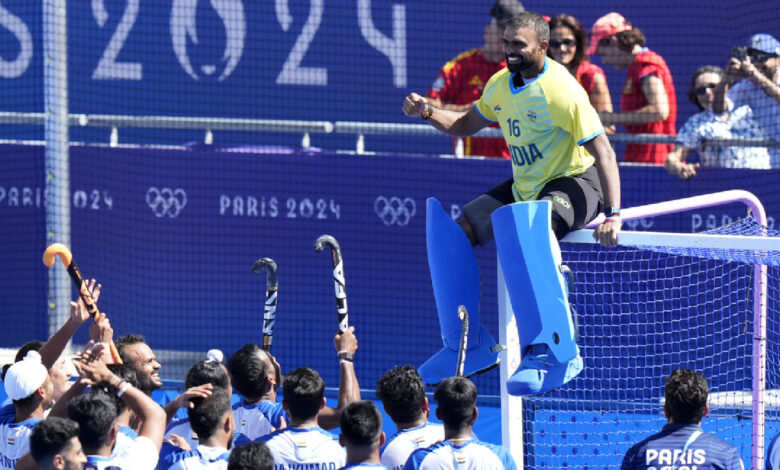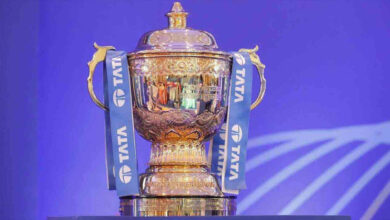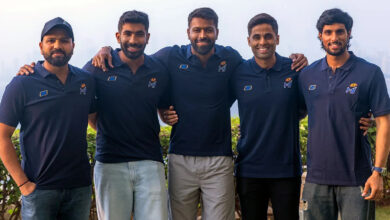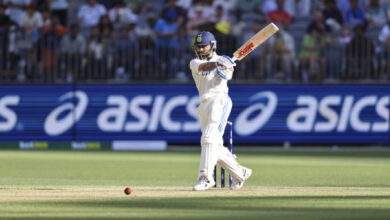Why Paris 2024 was the ‘Olympics of the Goalkeepers’ in hockey, and how more Penalty Corners were kept out | Hockey News

Given how important Paris 2024 was for PR Sreejesh, who had announced that the campaign was going to be his last for India, there was understandably a lot of attention on the Indian stalwart. His journey to the finish line, however, wasn’t just emotional. It was filled with stellar saves on the way, as the veteran stood firm between the goalposts in India’s run to back-to-back bronze medals.It was also a feature of the tournament in general, as goalkeepers left an indelible mark, especially in the men’s event.International Hockey Federation (FIH) released a report on Friday, detailing the key trends to emerge from Paris 2024 and one of thestandout nuggets was that the men’s tournament saw a 25% drop in goals scored compared to Tokyo — 155 goals in Paris versus 209 in Tokyo — whereas the women’s tournament maintained the same goal-scoring levels as Tokyo.
“Paris 2024 stood out for the exceptional defensive performances, in particular of the goalkeepers, earning it the reputation as the ‘Olympics of the goalkeepers.’ Goalkeeping was often the decisive factor in tightly contested matches, with keepers turning the tide in games that could have gone either way,” double-Olympian Jon Wyatt who is now FIH’s Interim Senior Director said in the report.
“For example, in the men’s competition, India’s match against Great Britain was heavily influenced Sreejesh’s incredible goalkeeping. Both Pirmin Blaak and Anne Veenendaal were instrumental in the Netherlands winning the gold medals, especially in the shoot-outs, as was Ye Jiao in China’s back-to-back shoot-out wins in the quarterfinals and semi-finals.”
A special static for the hory books was also that the gold medals in field hockey went to the same team for the first time in Olympic Games hory, with the Netherlands taking the top spot in the podium in both men’s and women’s events. But it was also worth noting that both finals went the dance, after being decided shootouts — also a first in Olympic hory. While the men’s event was a bit more unpredictable, China’s incredible run to the women’s final under the guidance of Aussie great Alyson Annan was also a mark of a closely fought Games.
In the men’s tournament, 55% of the matches either ended in a draw or were decided just one goal, a significant increase from the 34% seen in Tokyo. This could be mirrored in India’s run to bronze as well, unlike in Tokyo where they suffered heavy defeats against Australia and Belgium, here they beat the former for a famous win while only narrowly losing to the former champions.
Team India poses for a photograph after winning the bronze medal in the men’s field hockey at the Yves-du-Manoir Stadium during the 2024 Summer Olympics, Thursday, Aug. 8, 2024, in Colombes, France. (AP Photo/Aijaz Rahi)
Harmanpreet Singh’s men were also no pushovers in the semifinal against World Champions Germany. Both Australia and Belgium, finals in Tokyo, lost in the quarterfinals.
Another pattern that was seen in Paris was low Penalty Corner conversions attacking sides, but that could actually be mapped back to the men’s World Cup in Odisha last year. As The Indian Express had reported during the event, PC defensive skills have gone through the roof, with improved analytics and multiple pass-rushers, with the top countries boasting of sturdy units to keep away the drag flicks.
Key role of first rushers
Netherlands coach Jeroen Delmee had said that the first-rushers are now saving more flicks than goalkeepers at the moment. “That’s the main reason, the way they block the shot,” Delmee had said. “I think the first runner is stopping more shots than the goalies at the moment.”
Indeed, while Harmanpreet emerged as the tournament’s leading goalscorer, his PC conversion stood at 17%. India coach Craig Fulton made it a point to highlight how teams are better prepared to handle drag flicks, highlighting Germany as one of the best in the world.
“Across the board, the conversion rates for PCs were significantly lower than expected,” Wyatt said in the report. “For instance, in the men’s tournament, Germany and Belgium were the best, converting 25% of their penalty corners, while Argentina and South Africa were at 20%, but the remaining teams converted at less than 1 in 5. This drop in conversion rates didn’t stem from a decline in attacking prowess but rather from the remarkable advancements in defensive strategies and goalkeeper performance.”
Another clear trend that was spotted was the use of the aerial ball. In the countdown to Paris 2024, this daily had reported how we could see long-dance passes in the air will be a key tactic in Paris, not just for India but across the board.
“The aerial pass has become a vital tool for breaking down well-organised defences, especially in high-stakes matches where ground-level play is heavily contested,” Wyatt’s report said. “One standout moment was during the women’s quarterfinal between Germany and Argentina, where Nike Lorenz’s 25-metre aerial pass whilst running at full speed was an amazing piece of skill that set up a crucial goal, perfectly eliminating the last defender and allowing her teammate to reach the ball just before the goalkeeper, winning the penalty stroke which was converted to give Germany the lead.”
In fact, in an agonising few seconds at the very end of the semifinal against Germany, a brilliant aerial ball from midfield could well have resulted in an equaliser for India. Harmanpreet found Shamsher Singh in space with the clock winding down to the final seconds. But the Indian attacker fired a shot just over the bar.







